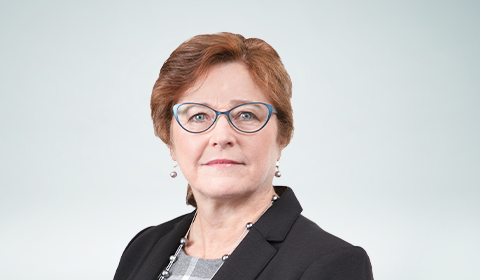Digital transformation continues to drive profound change in insurance, but progress comes at a price: As insurers seek to accelerate underwriting and bridge staffing shortages, complex, high substandard cases can pose an increasing challenge. In this competitive environment, expert risk assessment from a medical director gains increasing importance.
RGA made the rounds with Dr. Valerie Kaufman, RGA Vice President and Medical Director for U.S. Mortality Markets, to demystify what medical directors do and learn why investing in medical review matters. To learn more about RGA’s medical expertise and support services, contact us at CMSTeam@rgare.com.
You were previously a medical director at a primary carrier. Can you compare your experience there to your role at a reinsurer?
The biggest difference is that I was much closer to the actual sales process and had to bear that in mind when determining medical requirements, suggesting guideline changes, or making adverse underwriting decisions. The convenience of the proposed insured, cost-effectiveness, and the competitive landscape are powerful considerations. Adding a new requirement or changing an underwriting guideline, especially if doing so was out of step with the marketplace, could prompt advisors to take business to a different carrier. So, I always had to be prepared to explain adverse underwriting decisions to the advisors, whether this involved excluding preferred, applying a rating, or requiring additional evidence.
Now that you’re on the reinsurance side, how you spend your time during an average day?
Most of my time is spent answering case questions, which come in through several different channels. Sometimes I receive them through a formal medical referral queue, complete with the underwriters’ review and all case documents. I also can receive emails: These tend to have only key pages of the underwriting files attached along with the underwriter’s notes. And then there are informal questions that come by instant message or phone. It’s always nice to have this kind of personal contact with underwriter colleagues, as I work remotely and rely on technology to stay connected.
What about updating medical guidelines?
Some of my day is spent working on the manual, in particular the guidelines for heart diseases as I’m a cardiologist by training. While heart diseases are very common, the corresponding underwriting is complex. There are so many different ways to test for cardiac disease, and today cardiology is a hotbed of research, with clinical approaches and guidelines changing frequently as knowledge is gained. Underwriting guidelines need to reflect this complexity, yet at the same time be easily understood by our underwriters so they can be properly utilized. With my cardiology background, I occasionally work with clients who are considering requirement or guideline changes involving cardiac risk assessment, such as NTproBNP testing or reducing ECGs.
Risk assessment only begins with the manual – so much of the complexity in underwriting is understanding nuanced cases, and that skill comes with practice and teaching. I spend time developing training materials for both our internal underwriters and client underwriters. For our RGA colleagues, the medical team provides formal monthly medical education sessions – the MES – which usually cover a specific medical topic in depth with some case examples. The underwriters like the MESs, but also asked for more specific case-based training, so we recently introduced twice-a-month interactive case clinics called Medical Morsels. The Morsels are only 30 minutes long and are case-based, chosen due to an interesting impairment, an underwriter question, or to clarify guidelines in the manual. I’ve also given medical talks at several industry groups and client companies, both live and in-person and by webinar.
So, underwriting requires specialized knowledge, yet over the last decade training budgets and graduate programs have declined, even as employees with decades of experience retire in greater numbers. More than half of all U.S. underwriters are already over age 50 according to the Academy of Life Underwriting Life Underwriter Census. In your opinion, how can the industry bridge this skills gap?
RGA sees an opportunity in this challenge and another way for us to partner with our clients by using the extensive risk assessment expertise we have already in-house. From my experience on the direct side, I know that one of the most difficult challenges for the underwriting department is to maintain service standards during the huge peaks of business volume that come in at year-end and during sales contests. RGA created the SUP ( Strategic Underwriting Program) program to help with this, and as a reinsurer, we benefit too. Our underwriters gain a new perspective from the direct carrier point of view. Just recently, we have also made our medical directors available as part of the program.
What are you most excited about when it comes to the future of medical directors and the role they will play in this industry?
The roles of the medical director and the underwriter are changing in many ways. In the past, we managed risk. Now we are also being asked to help shape strategy and to add value throughout the product development cycle. We’re becoming more involved with different ways of assessing risk, such as the development of algorithms and using different types of statistical analysis. That’s exciting. But for me, the most exciting thing is that medicine is changing. There is more focus on outcomes research, more accurate ways of assessing medical risk, and better means of determining the optimal treatment for individuals. The lesson for me: continuous learning. That’s the only way to grow – as a business, or as a person.


